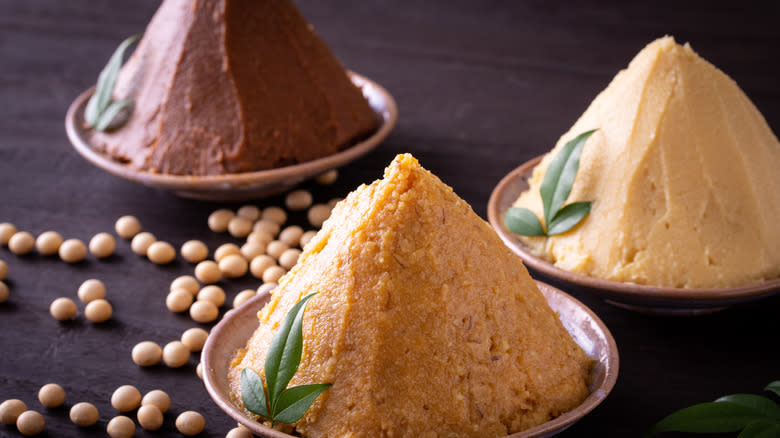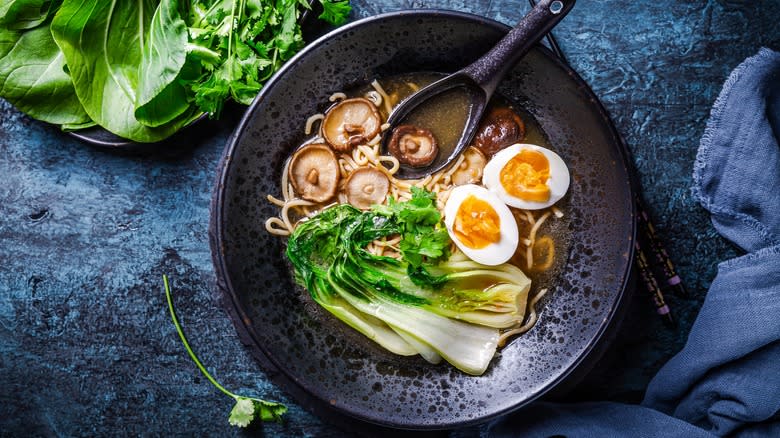Red Vs White Miso Paste: Which Is Better For Soup?

Miso paste is the foundation for a number of Japanese soups, completing the savory broth with its unique fermented flavor. As long as you use it in your recipe, your dish is bound to taste great — but is white or red miso paste the right ingredient for soup?
Though they both bring umami to food, the red and white pastes are complete opposites out of the three types of miso. White miso, or shiro, is the paste you'll most commonly see in stores and used in recipes for home cooking. Fermented for only about four weeks, shiro is sweet and nutty, and it's the lightest in taste and color. While it does bring a lot of flavor, it's also the lowest in salt of the three. Red miso, or aka, can be aged for up to three years. As it ages, it takes on a deeper red color that can look almost black in some cases. Aka also takes on an intense taste to match. With time, it loses its sweetness, developing a pungently umami flavor instead. As the miso paste with the highest salt content, it can be intense in dishes.
With soup recipes, particularly simple miso soup, white miso is frequently used. Its milder flavor makes it easier to use in soups since it's harder to go overboard with it. Shiro's delicateness also leaves room for other flavors to shine through. Due to its pungency, red miso is more often used for marinades and dressings.
Read more: Restaurant Foods That Always Taste Better Than What You Make At Home
Choose Your Miso Based On Your Soup Ingredients

Though many recipes rely on white miso, that doesn't mean the red kind isn't used in soups at all. If you find that your miso soup doesn't have a restaurant-quality taste, it's because their kitchens tend to use red aka miso in soups. The flavor is very strong, but the mouth-watering effect is unbeatable. If you're not accustomed to using aka, it may be better to stick to shiro for scaled-back dishes. Aside from simple miso soup, shiro works well in caramelized sweet potato miso soup. Comprising flavors like sweet potato, onion, and celery, the recipe is refined yet uncomplicated, making shiro the perfect ingredient to give the soup a simple boost.
For soups that are a little busier, red miso comes in handy. A spruced up instant ramen and fixings recipe makes use of everyday ingredients by giving them a rich boost with aka to showcase the strength of the paste. Filled with thick ramen noodles, soy sauce, chicken broth, shiitake mushrooms, and garlic, the hearty dish already has tons of flavor to build off of. The aka simply comes in to wrap everything up in umami, intensifying the taste rather than standing out too much.
Read the original article on Tasting Table.


